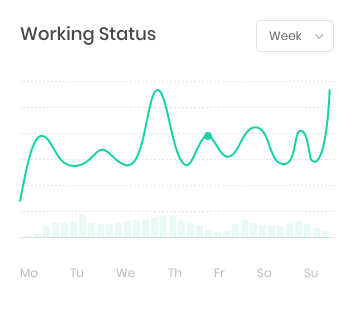+968 9596 3381
Phone Number
[email protected]
Email Address
Mon - Thu: 8:00 - 5:00
Online store always open
Phone Number
Email Address
Online store always open
WhatsApp Us Today
Drop Us an Email Today
Google Map Location
Saturday to Thursday

Introduction: The Rise of Women in Oman’s Workforce
Historical Context: Women’s Role in Oman’s Economic Development
Omani Labor Law: Rights Guaranteed to Women Employees
Equal Pay and Non-Discrimination Rules in Oman
Maternity Leave and Childcare Provisions
Flexible Work Policies Supporting Women
Protections Against Workplace Harassment
Incentives for Hiring and Promoting Women in Oman
Government-Led Women Empowerment Programs
Omanization and the Role of Women Employment Quotas
Sectors with High Female Participation in Oman
Case Study: Successful Omani Women Leaders in Business
Challenges Women Still Face in the Omani Workforce
The Role of Technology and Remote Work for Women Employees
Women Entrepreneurs in Oman: Support Schemes and Funding Options
Future Outlook: Vision 2040 and Women’s Economic Inclusion
Employer Checklist for Supporting Women in the Workplace
Conclusion
FAQs
Over the past few decades, Oman has experienced a significant transformation in women’s workforce participation. Traditionally centered around family and community roles, Omani women are now thriving in diverse sectors—from banking and education to oil & gas, healthcare, IT, and entrepreneurship.
The government has introduced legal protections, financial incentives, and workplace reforms that not only safeguard women’s rights but also encourage their active contribution to the economy. In alignment with Oman Vision 2040, women’s empowerment is seen as essential to creating a diversified and knowledge-based economy.
Historically, Omani women contributed significantly in agriculture, handicrafts, and trade. With modernization and Sultan Qaboos’ reforms since the 1970s, women began to enter formal employment.
Key milestones include:
Women’s participation in government positions.
Access to higher education scholarships.
Representation in the Shura Council and State Council.
Growing involvement in STEM sectors.
Today, women make up over 30% of the workforce in Oman, with increasing participation in both public and private sectors.
Oman’s Labor Law (Royal Decree 35/2003, updated in 2021) provides strong protections for women, including:
Prohibition of discrimination in hiring and promotion.
Equal pay for equal work regardless of gender.
Maternity leave entitlements.
Legal protection from unfair dismissal during pregnancy.
Regulations on working hours (restrictions on night shifts in certain industries).
These protections ensure that women have a secure legal foundation to participate in the workforce.
The Omani Labor Law explicitly requires:
Equal pay for men and women performing the same job.
Prohibition of gender-based discrimination in hiring, promotion, and training.
Enforcement through the Ministry of Labor inspections.
Companies violating these rules face financial penalties and possible suspension of labor clearances.
Women employees in Oman are entitled to:
50 days of paid maternity leave.
Leave may be taken before or after childbirth.
Protection against dismissal during maternity leave.
Employers with large female workforces may be required to provide childcare facilities.
This ensures women can balance career and family responsibilities.
To improve women’s participation, Oman encourages:
Flexible working hours.
Part-time employment contracts.
Opportunities for remote work, especially post-pandemic.
Such policies make it easier for women to continue working after marriage or motherhood.
Omani law prohibits harassment and unsafe working environments. Employers must:
Maintain anti-harassment policies.
Provide reporting channels for female employees.
Take disciplinary measures against offenders.
These protections foster safe and inclusive workplaces for women.
To encourage businesses to employ women, the Omani government provides:
Tax benefits and subsidies for companies hiring women.
Training grants for upskilling female employees.
Entrepreneurship funding for women-led businesses.
Recognition programs for companies excelling in women empowerment.
Several initiatives support women in Oman:
Public Authority for Small and Medium Enterprises (Riyada) – women entrepreneurs funding.
Oman Women’s Association (OWA) – training and development programs.
Vision 2040 projects – promoting women in leadership roles.
Omanization policies aim to increase Omani nationals in the workforce. For women, this means:
Preferential hiring in government roles.
Encouragement of women’s participation in education, healthcare, and banking.
Leadership quotas in some institutions.
Women in Oman are making strong contributions in:
Education (teaching, administration).
Healthcare (doctors, nurses, pharmacists).
Banking & Finance (managers, analysts).
IT & Digital Services (coding, data analysis).
Entrepreneurship (SMEs, startups).
Example: Sheikha Al Maskari, CEO of an Omani conglomerate, has become a symbol of women’s leadership in business. Such examples inspire young Omani women to pursue leadership roles.
Despite progress, women face:
Cultural expectations balancing family and career.
Limited representation in top executive positions.
Gender biases in certain male-dominated industries.
Access to funding challenges for women entrepreneurs.
Technology has opened new opportunities for women:
E-commerce businesses run from home.
Remote work flexibility for mothers.
Online training and education to upskill.
Women entrepreneurs benefit from:
Low-interest loans from SME development funds.
Business incubators focused on female founders.
Networking opportunities through women’s associations.
Oman’s Vision 2040 explicitly highlights women’s empowerment through:
Increased leadership opportunities.
Higher female workforce participation rates.
Expanding women’s role in STEM, innovation, and technology sectors.
✅ Ensure equal pay policies.
✅ Provide maternity and childcare support.
✅ Introduce flexible working hours.
✅ Enforce anti-harassment policies.
✅ Offer mentorship and training for women leaders.
Women’s participation in the Omani workforce is not just about equality—it’s a national economic priority. With strong legal protections, government incentives, and cultural shifts, women are positioned to become key drivers of Oman’s Vision 2040.
Q1. Do women in Oman have equal pay rights?
Yes, Omani labor law mandates equal pay for equal work.
Q2. How many maternity leave days are women entitled to?
50 days of fully paid maternity leave.
Q3. Can companies dismiss women during maternity leave?
No, dismissal during maternity leave is prohibited.
Q4. Are there incentives for companies hiring women?
Yes, including tax benefits, training subsidies, and government grants.
Q5. Do women entrepreneurs get government support in Oman?
Yes, through SME funds, incubators, and Riyada programs.
Q6. Can women work night shifts in Oman?
Only in industries where it is legally permitted and safe.
Q7. What protections exist against workplace harassment?
Employers must implement anti-harassment policies and reporting mechanisms.
Q8. Are women represented in leadership roles in Oman?
Yes, though representation is growing, women still face leadership gaps.
Q9. Can women work in oil & gas in Oman?
Yes, many women are now employed in engineering and technical roles.
Q10. What is the Omanization impact on women?
It encourages companies to hire Omani women in compliance with quotas.
Q11. Is remote work legally recognized for women?
Yes, as long as employment contracts comply with labor laws.
Q12. Do women get child support benefits at work?
Large employers may be required to provide childcare facilities.
Q13. Are there women-only business associations in Oman?
Yes, the Oman Women’s Association plays a key role.
Q14. What is Vision 2040’s target for women in the workforce?
Significantly higher participation and leadership roles.
Q15. Are women allowed to own businesses in Oman?
Yes, women can fully own and operate businesses.
Q16. Do women have the right to education in Oman?
Yes, with equal access to schools, universities, and scholarships.
Q17. Can expatriate women work in Oman?
Yes, provided they hold valid work permits.
Q18. How are disputes involving women employees resolved?
Through the Ministry of Labor and employment courts.
Q19. What industries have the highest female participation?
Education, healthcare, banking, and IT.
Q20. Are there government campaigns promoting women’s employment?
Yes, through Vision 2040, SME support, and labor ministry initiatives.




Fill out our quick and easy contact us now. Briefly tell us about your vision and goals, and we’ll be in touch shortly to discuss a personalized plan for your success.
Al-Khuwair, Muscat, Sultanate of Oman